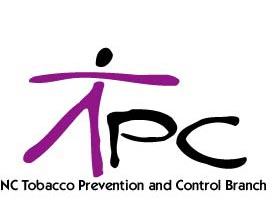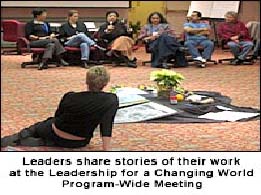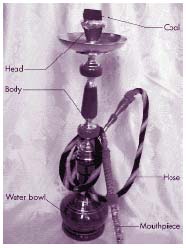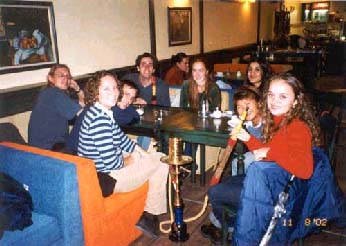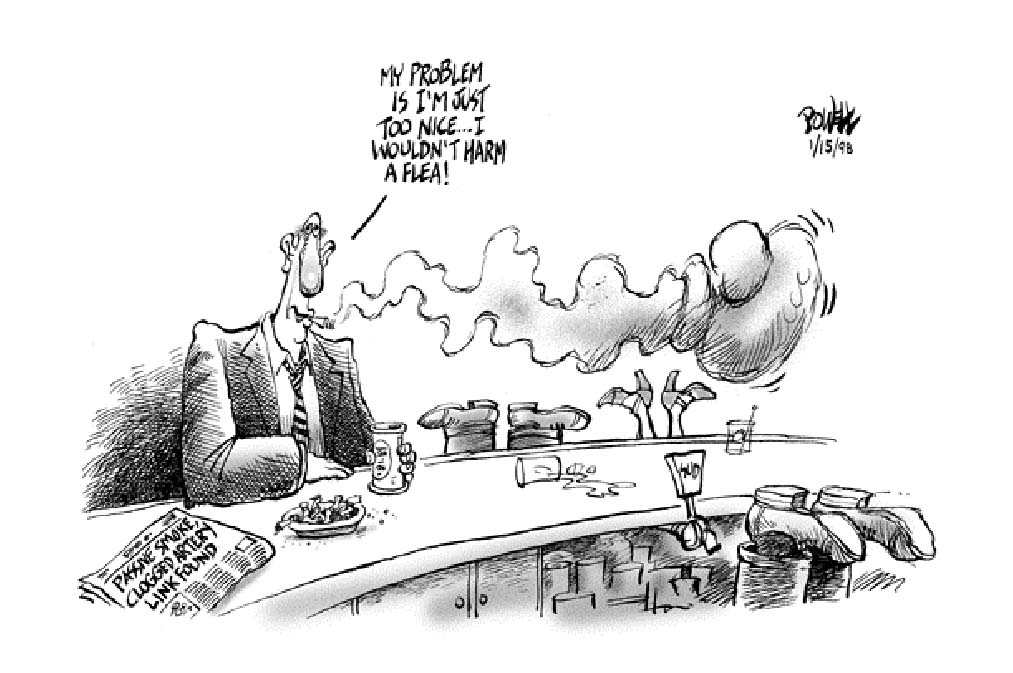SPARK PLUG
Values-Based Life and Leadership
Skills
At the end of every July, the Des Moines
Register newspaper sponsors RAGBRAIâ, the world's oldest and
largest organized bicycle tour (the 2004 ride is going on even now, as
I write this). More than 12,000 people participate in this annual bike
ride across Iowa, which, despite what you may have heard, is not flat.
Tim Lane is a co-founder of Team Skunk, the bicycle club with which I
ride. Every year, he gives a welcome to new members in which he
admonishes us to leave each campsite better than we found it, but then
to go one step higher and to leave each person we meet somehow better
for the encounter.
On RAGBRAI XXVIII in July of 2000, one of our riders was Cindy
Porteous, then-executive director of the National Association for
Health and Fitness. Near the end of one particularly arduous day, she
was struggling her way up a hill into a headwind when she felt a strong
hand plant itself in the small of her back and began pusing her up the
hill at a high rate of speed. Looking around, she discovered that the
hand belonged to the leader of an Italian bicycling racing team, of
which she had just become lead bike! It was an exhilirating moment!
The next day came a moment not so happy. Cindy was riding in a pack
down a congested gravel road when a pickup truck came barreling toward
them from the opposite direction. The driver showed no signs of slowing
down or pulling over as he raced toward the bicycles, and riders
frantically scattered to get out of his way. Cinty had no option but to
ditch her bike, and sustained severe cuts and bruises plus a broken
rib. Even more painful was the emotional damage; she had trained hard
and come a long way for this ride, and now having been made the victim
of a random act of recklessness would cut it short.
When Cindy came back from the hospital to our campsite that evening,
physical pain and disappointment weighed heavily upon her. Tim, who had
disappeared for several hours after reaching camp, was surprisingly
ebullient, and went around telling everyone to make sure and be there
at 6 o'clock, because something special would be happening. Sure
enough, at the appointed hour the Italian bicycle racing team showed
up. For a few magical moments, there was no language barrier as they
presented Cindy with an official Italian bicycle team T-shirt, which
they had all autographed, and as everyone posed for photos and shared a
beer and a laugh.
Cindy laughed and cried, and it was obvious that in his own way, Tim
had done as much for her healing as the doctors who stitched up te deep
gash on her chin. Cindy has ridden on every RAGBRAI since. While
memories of being chased off the road by a speeding pickup truck have
faded, she will never forget the day she was an official member of the
italian racing team. That afternoon, while the rest of us were propping
up our sore legs and downing prodigious quantities of Gatorade and
other liquids, Tim Lane was racing around from campsite to campsite in
search of the Italians. He wasn't about to allow a fellow member of
Team Skunk go home worse for having participated in the ride. It wasn't
just Cindy who was affected by his commitment; His example has had a
positive influence on every member of Team Skunk and, I imagine, on the
Italian racing team as well.
I sometimes tell this story in employee group presentations. I close by
asking this question: What would it be like to work in a place where
everybody made the commitment that they were going to do their best to
make sure that each employee went home alittle better than they came in
at the beginning of their workday. The typical response is a collective
sigh, followed by "WOW!"
Whenever I work with a support group, I am struck by the fact that - no
matter how serious the problem is for which participants need support -
nobody ever leaves a meeting in a worse frame of mind than they
arrived. They always leave with a bit more courage, a bit more
inspiration, and a bit more hope. I wish I could say the same about
watching people come into work and then leaving at the end of the day!
It is possible, but the CEO can't mandate it. It needs to be a
grassroots realization that we can all serve each other by making sure
that everybody leaves somehow better than they came in.
"Don't
aim at success - the more you aim at it and make it a target, the more
you are going to miss it. For success, like happiness, cannot be
pursued; it muse ensue, and it only does so as the unintended
side-effect of one's personal dedication to a cause greater than
oneself or as the by-product of one's surrender to a person other than
oneself. Happiness must happen, and the same holds for success: you
have to let it happen by not caring about it."
Viktor E. Frankl: Man's Search for Meaning
